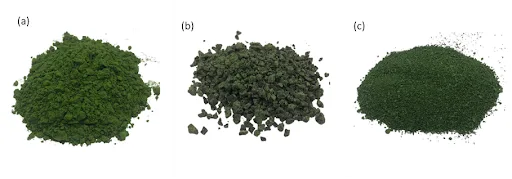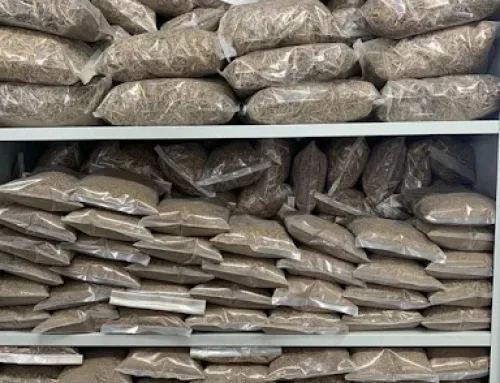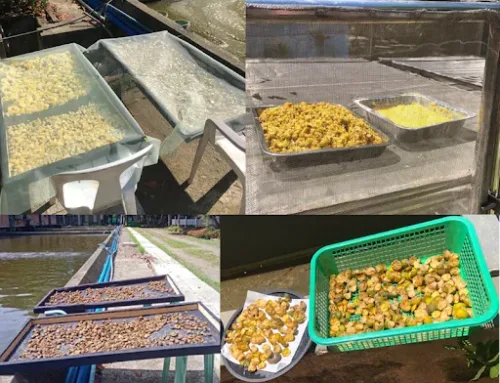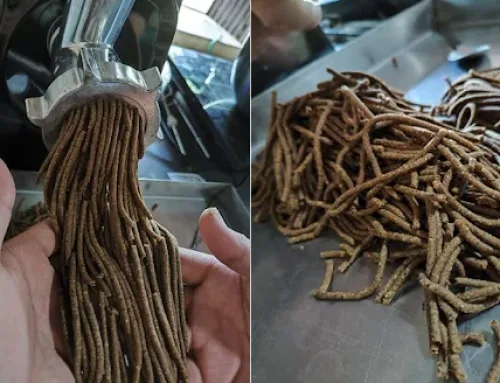In this Article

Sample images of the dried microalgal biomass obtained from various drying processes (a) spray-dried; (b) oven-dried; and (c) freeze-dried
Microalgae are known to be beneficial in a diverse field of applications but, very limited extensive studies have been conducted for its post-harvest development and its other functionality aspects.
One of the challenges faced by local producers is maintaining microalgal post-harvest quality. The high moisture and nutrient-rich medium (fresh and paste form) make it susceptible to fast deterioration. In order to keep it fresh, it needs to be stored in refrigerated temperature, and storage life varies (few days to weeks only) depending on the harvesting method. If proper storage conditions are not properly maintained, supplies could lead to deterioration and wastage. It also makes product transportation very challenging. In addition, the production is based on the immediate market demand to prevent deterioration and wastage during storage. Producers could not stockpile supplies during good weather conditions, and reserve for eventual market demands.
This study was conceptualized to be able to address this issue through the different post-harvest methods of moisture removal. In addition, finished products will be characterized using physico-chemical analyses and storage viability studies. The findings of this study aim to help microalgal biomass producers by providing in-depth data about the potential products to be developed, competitive market advantage, and expanded applications.








